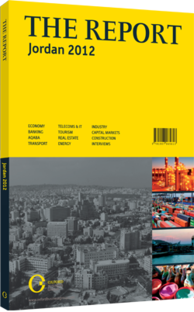Jordan Steel: Mining & Extraction
THE COMPANY: Jordan Steel (JOST) was established in 1993, and has since grown to become the country’s largest steel producer, with 250,000 tonnes of capacity. JOST is a publicly listed company on the Amman Stock Exchange, with paid-in capital of JD35m ($49.18m). The company produces a variety of steel products, including concrete reinforcement steel bars in various diameters and lengths, flat and square bars, mesh wire, as well as steel billets. The company’s main clients operate in the construction industry.
The company’s production of high-quality reinforcement steel started in 1996, and not long after JOST became the first steel enterprise in Jordan to acquire ISO9001:2000 certification. In 2000 JOST introduced a number of new steel products under the collective name “Merchant Steel”, and in 2003 JOST established Jordan Steel Engineering Industries as a subsidiary to cut and re-bend steel bars for a wide range of construction projects.
In 2005 JOST entered into an equal partnership with a local investor to form Consolidated Jordanian Iron and Steel Works to produce steel billets from steel scrap, a move that allowed the company to diversify its sources of raw materials. Three years later, JOST bought out its partner and became the sole owner of the joint venture. In February 2012, JOST announced a 55% annual increase in net income during the year 2011 to JD5.7m ($8.01m) on a 43% rise in operating income to JD118.6m ($166.66m).
Steel demand in Jordan is estimated to be around 600,000 tonnes per year, and there are a number of local producers competing to fulfil this demand. Moreover, the Jordanian market is open for steel imports. Local producers face a number of difficulties, including the high cost of energy, which is attributed to Jordan’s dependence on imported oil. The difficulties increased in 2011 because of the frequent disruption to Jordan’s supply of Egyptian natural gas after several attacks on the gas line from Egypt. Such disruptions forced the government to temporarily raise electricity prices by approximately 17% earlier in 2012, which had a heavy and direct effect on the country’s industrial sector.
DEVELOPMENT STRATEGY: JOST’s development strategy is to reduce its dependence on suppliers of raw material, to diversify its line of products and to increase its overall market share. Establishing Consolidated Jordanian Iron & Steel Works to produce steel from scrap was one move to reduce dependency on imported raw steel. In addition, by establishing the Jordan Steel Engineering Industries, JOST was able to diversify its product line. The company is looking to continue this strategy in 2012. JOST was nearing the end of a project to expand production by up to 50,000 tonnes by increasing its melting and rolling operations. Moreover, the company will start to produce its own oxygen, which is used in the process of producing steel.
CHALLENGES: Any future development strategy will have to include elements that deal with the long-term obstacles that are facing the industrial sector in Jordan, namely the high cost of energy. JOST’s answer to this challenge started with equipping its plants with the needed infrastructure to use natural gas to produce energy, but the supply of gas itself is in question. Moreover, JOST has a licence to import fuel, which can lower its cost. Finally, JOST is always looking to improve the efficiency of its operations and machinery to reduce production costs.
Another issue that any strategy will have to deal with is the level of demand for steel, which is subject to the activity of the real estate and construction sectors. After years of heavy activity, it was necessary for the Jordanian government to extend tax and transaction fee breaks to the real estate sector in the aftermath of the 2008 global financial crisis. However, recent budget difficulties have forced the government to roll back these breaks. Such a move might reduce the activity of the real estate sector and eventually lower the demand for steel.
You have reached the limit of premium articles you can view for free.
Choose from the options below to purchase print or digital editions of our Reports. You can also purchase a website subscription giving you unlimited access to all of our Reports online for 12 months.
If you have already purchased this Report or have a website subscription, please login to continue.

